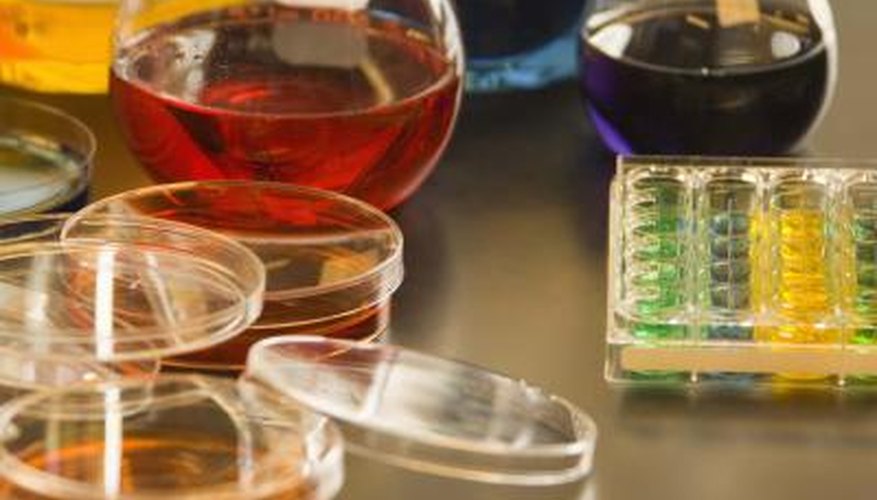Biologists use selective media along with differential media to isolate and identify different bacterial organisms. Both medium types operate differently. Selective media isolate organisms, and provide a growing environment conducive to some types of organisms but not to others. Differential media provide a growing environment that allows particular organisms to grow in different ways. As the name suggests, differential media differentiate between types of the same organism. Addressing the uses and applications of selective media requires you to compare and contrast it to differential media.
Growing Environment
The advantage of using selective media is the ability to control what will and will not grow on a particular culture plate or petri dish. Selective media can include dyes and other chemicals such as antibiotic types, specifically neomycin, that prevent the growth of some types of cells. This gives biologists the ability to control what types of organisms grow in a specific experiment. However, in limiting the growth of organisms in an experiment to only specific types, scientists also eliminate the possibility of understanding how the organisms that do grow might change if exposed to other types of cells and organisms. This limitation or disadvantage of selective media requires the further study of a specific organism in a differential medium.
- The advantage of using selective media is the ability to control what will and will not grow on a particular culture plate or petri dish.
- However, in limiting the growth of organisms in an experiment to only specific types, scientists also eliminate the possibility of understanding how the organisms that do grow might change if exposed to other types of cells and organisms.
Feedback
Selective media provide immediate feedback on how an organism's cells interact with any controlled chemical or substance introduced into the media. For example, if the introduction of an antibiotic such as ampicillin destroys or otherwise agitates the growing cells, scientists can reasonably conclude that the cells react adversely to ampicillin. Doctors use this type of feedback to discover allergies in patients. In some cases, however, adding too many distinct chemicals into a selective media mixture can create a cocktail that affects the organism's cells. In this scenario, scientists often cannot determine whether the last chemical introduced created the reaction, or a previous chemical or the mixture of some or all of the chemicals was the catalyst.
- Selective media provide immediate feedback on how an organism's cells interact with any controlled chemical or substance introduced into the media.
- In some cases, however, adding too many distinct chemicals into a selective media mixture can create a cocktail that affects the organism's cells.
Isolating Positive Growth
As mentioned, selective media provide strong feedback on what chemicals can affect the growth of certain cells, and how those chemicals affect the cells. Although this provides important information on chemicals that have a negative effect, it is often more difficult to use selective media to isolate chemicals that might have a positive effect. If an organism's cells continue to grow upon adding certain chemicals to a selective media, scientists often cannot determine whether that growth is caused by the chemical's introduction, or if the growth is natural and unaffected by the chemical's introduction.
Growth Variation
Though selective media provide important information on those chemicals that prevent or hinder growth of an organism's cells, they cannot provide much data on how the growth of those cells can vary based on different chemicals and environments. In this way, selective media act as an on/off switch; either the cells grow, or they do not. Differential media, however, act as a dimmer; cells grow, but at different rates and in different ways. Consequently, when analysing the growth and death factors of a certain organism's cells, it is necessary to use selective and differential media.
- Though selective media provide important information on those chemicals that prevent or hinder growth of an organism's cells, they cannot provide much data on how the growth of those cells can vary based on different chemicals and environments.
